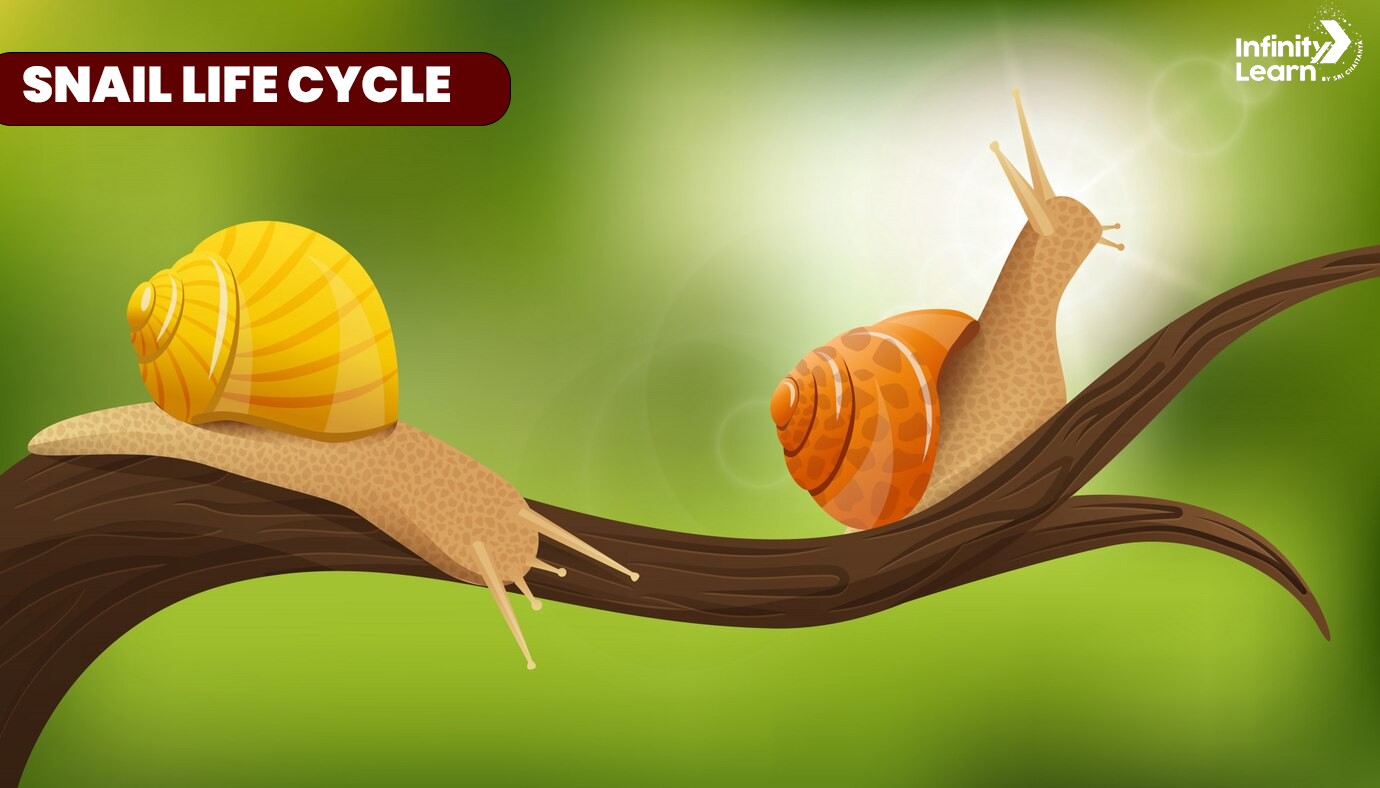Table of Contents
Snails are tiny animals with soft bodies that can get harmed quickly. They have shells that act as their protective covering or armour to protect them. A solid and hard substance called calcium makes up the outer shell. Gastropod animals is another name used for snails. The shell is like their moving houses, which they can take everywhere.
Snails don’t have lungs, and they breathe through their skin. That’s why we always find them in moist and cool places. So they don’t dry out. They are active in the monsoon season, but we can’t find them in winter. Sometimes they are the reason in our house for spoiling fruits and vegetables. Their food is leaves, cabbage, mushrooms, and even algae.
Snails belong to the Phylum Mollusca category of animals and other animals like octopuses and slugs. Snails are everywhere: in deserts, forests, mountains, and oceans. These tiny animals prey on rats, snakes, birds, and lizards. Snails have enclosed shells that help them to retain moisture. They are cold-blooded invertebrates.

Snails can live for many years, whereas some species can live up to 25 years. Mostly, the snails die due to old age. The second reason for their death is the unfavourable water conditions. Different predators even eat the snails. If the shell of a snail breaks for any reason, then due to the loss of moisture, the snail can die.
Life Cycle of Snail
The life cycle of a snail has four stages in it, which are as follows;
- The egg
- The young snail
- The adolescent snail
- The adult snail
Let’s discuss all these stages of snail in detail;
The egg
Snails are Hermaphrodites, meaning each has male and female reproductive organs. But in some cases, it is different. Some snails are individually male and individually female. Snails prefer to have sexual reproduction with other snails rather than self-fertilization. It helps to increase the count of the eggs. After fertilization, snails lay the clutch of eggs (10-100 eggs) in the damp soil or under the leaves. This process occurs from late autumn to early spring.
The young snail
After two to three weeks, depending on the species and temperature, the eggs hatch. Those little snails are known as veliger larvae. Those who hatch first are mostly to eat the unhatched eggs. The larvae are born with gills to breathe in the water. They grow and develop in the water. In the next few weeks, they will be eating algae and plankton. This process takes place in the winter and spring seasons
The adolescent snail
In the summer season, snails develop lungs so that they can breathe in the air. They come out of the water and start their journey on the land. Now, they begin to eat leaves and mushrooms. As the snails grow more prominent, they get new spirals on their shells.
The snails climb the trees or other higher surfaces to avoid water loss on the land. They continue living like this until they become mature. Due to the heat in the summer, we don’t get to see the snails as they like damp and cool climates. Snails don’t breed in the summer season.
The adult snail
In the autumn season, the snails are fully mature. They reach the peak of their sexual maturity. At this time, due to the rain, the activity of the snails increases. After two to three weeks of the rain, the breeding season of the snails begins. They become interested in finding their mates. The snails shoot darts of hormones on other snails so that they can be ready to reproduce.
We can find the mating snails in pairs, with the soles of their feet touching each other. After the mate’s success, the snails lay eggs shortly after mating, and the cycle repeats.
| Life Cycle’s | |
| Butterfly Life Cycle | Bed Bug Life Cycle |
| Plasmodium Life Cycle | Fish Life Cycle |
| Schistosomiasis Life Cycle | Dragonfly Life Cycle |
| Lice Life Cycle | |
Conclusion
The whole life cycle of the snails shows how they adapt to changes and transform themselves depending on their environment and climate. Snails are even considered the oldest animal living on our planet. The fossils give evidence to this theory. The snails have survived on our planet for the last 500 million years. They help in the decomposition of dead matter. They even leave a slimy substance behind them, which benefits the soil.
The snails are categorized based on their habitat. Terrestrial snails like the Molluscan live on the land and are usually found everywhere in the rainy season. Second, are the aquatic or sea snails that live in the water. The transparent white slime helps the snails to move on any surface without harming them.
FAQs on Snail Life Cycle
What is the difference between slugs and snails?
Snails have enclosed shells around their soft body, which helps them retain moisture and survive in harsh conditions. Slugs also have a delicate body type with an exoskeleton, which is the same as the snail. But without enclosed shells.
How long does the snails survive?
Snails can live for many years, whereas some species can live up to 25 years, depending on the temperature and environmental conditions. The life span of the snail depends upon the surroundings in which they live.
Can snails survive without food?
No, snails cannot survive without food. But they can go a week without eating anything
How does the snail die?
Snails can live for many years, whereas some species can live up to 25 years. Mostly, the snails die due to old age. The second reason for their death is the unfavourable water conditions. Different predators even eat the snails. If the shell of a snail breaks for any reason, then due to the loss of moisture, the snail can die.









